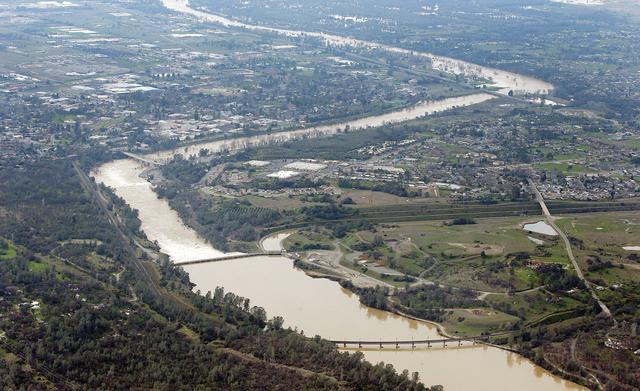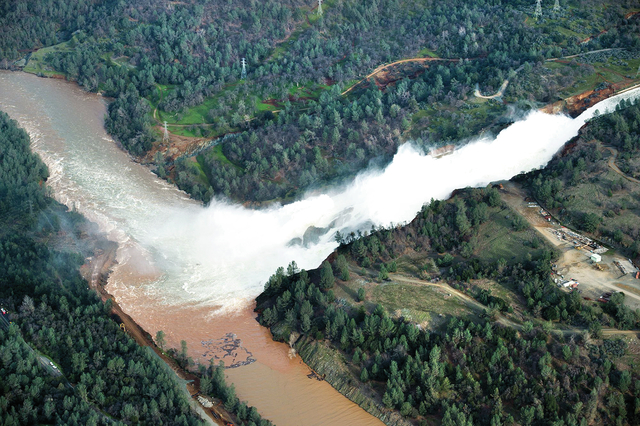Environmental activists and local government officials warned more than a decade ago about the risk of catastrophic flooding below a major Northern California dam — the very scenario that threatened to unfold over the weekend, forcing the evacuation of nearly 200,000 people downstream.
But those fears were dismissed at the time by the state and federal regulators, who said they were confident the hillside that helps hold back billions of gallons of water was stable.
That decision has come under scrutiny now that the hillside — or emergency spillway, as officials call it — has been put to its first test in the Oroville Dam’s nearly 50-year history.
Over the weekend, water from the storm-swollen reservoir behind the dam spilled down the unpaved slope, causing such heavy erosion that authorities feared a huge breach would open and send a 30-foot-high torrent downstream, devastating thousands of homes. The dam is about 70 miles north of Sacramento.
The danger appeared to ease slightly on Monday as the water level behind the dam dropped, but more rain was in the forecast, and residents were not allowed back into their homes.
In 2005, at the start of dam’s still-unfinished relicensing process, environmental groups asked federal regulators to require that the California Department of Water Resources “armor” the hillside — or reinforce it, typically with concrete or boulders — to prevent potentially catastrophic erosion from water escaping around the side of the 770-foot-high dam.
The groups said soil, rocks and debris could be swept into the Feather River below, damaging highway bridges and power plants. In a worst case, they warned, a major breach would unleash floods that could take lives and destroy property.
But the water resources department dismissed the need to fortify the natural earthen barrier and insisted the hillside would not be in danger if water flowed down it. In a final environmental impact report dated June 2008, state officials wrote that no “significant concerns” about the hillside’s stability had been raised in any government or independent review.
“I think that the warning that was given should have been taken with the utmost seriousness,” Bob Wright, attorney at Friends of the River, which flagged the concern along with the Sierra Club and South Yuba River Citizens League, said Monday. “We’re talking about the danger to life and property.”
On Monday, Bill Croyle, acting head of the Department of Water Resources, refused to comment on the 2005 concerns, saying he was not familiar with the warnings and would need to research the matter.
The Federal Energy Regulatory Commission, the agency that oversees the dam’s licensing and which received the request for mandatory armoring, did not immediately respond to a request for comment.









